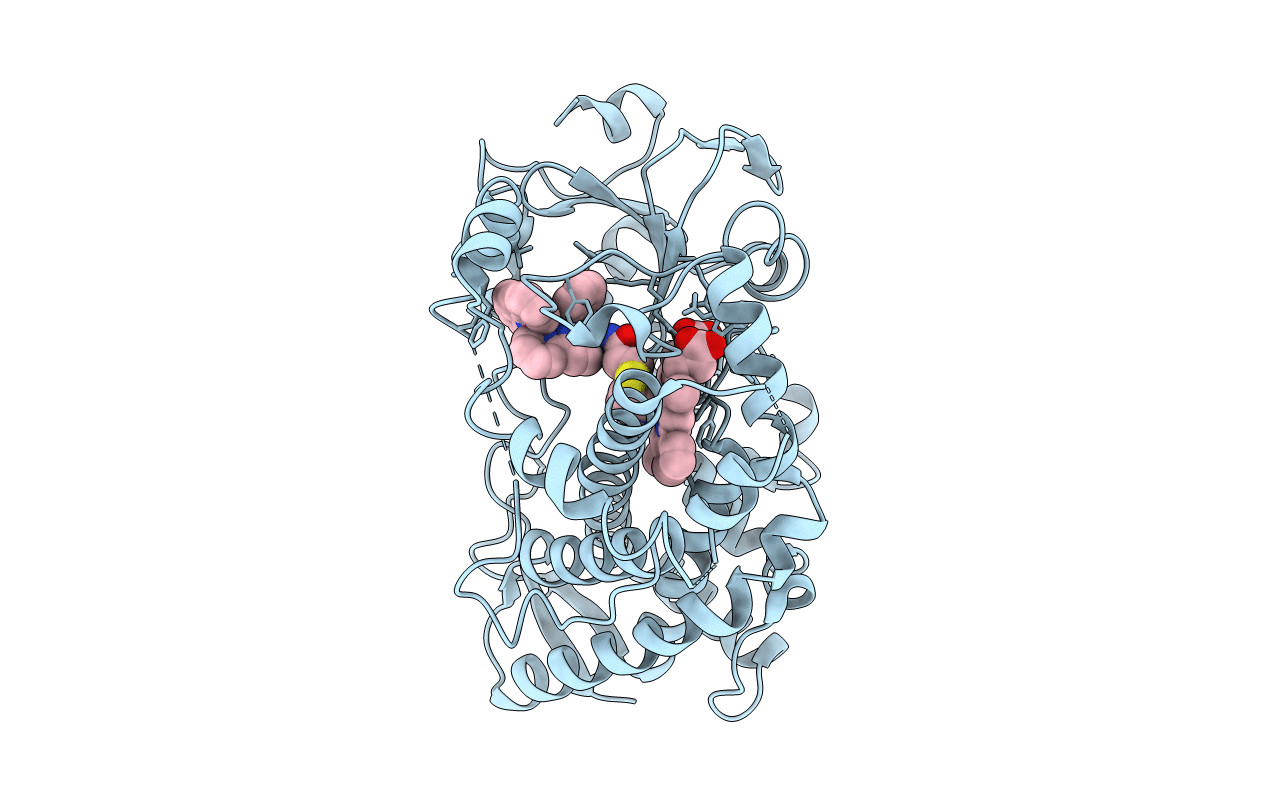
Deposition Date
2022-03-14
Release Date
2022-08-31
Last Version Date
2023-10-18
Entry Detail
PDB ID:
7UAY
Keywords:
Title:
Crystal structure of human CYP3A4 with the caged inhibitor
Biological Source:
Source Organism:
Homo sapiens (Taxon ID: 9606)
Host Organism:
Method Details:
Experimental Method:
Resolution:
2.78 Å
R-Value Free:
0.28
R-Value Work:
0.25
R-Value Observed:
0.25
Space Group:
I 2 2 2


